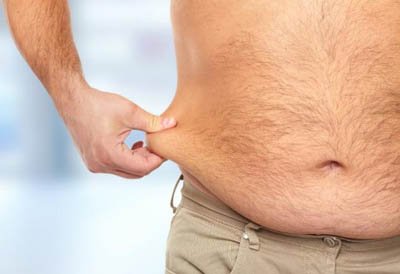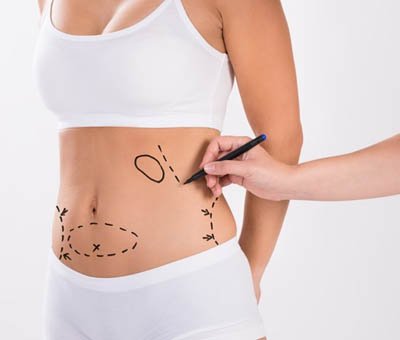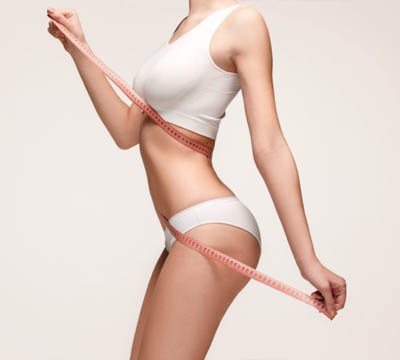What is liposuction?

Removing the excess body fat or adipose tissue unwanted areas of the body surface by suction. This popular type of cosmetic intervention removes unwanted deposits of fat from the following body areas: chin, neck, cheeks, upper arms, upper breasts, abdomen, buttocks, hips, thighs, knees, calves and ankles.
This must not be seen as a solution to obesity, or as a substitute for diet and exercise. The best candidates for this procedure are people with relatively normal weight but have excess fat clusters in specific areas.
The aim of liposuction is to a new contour the body with minimal scarring. The results are permanent as long as the person holds a healthy lifestyle, eat sensibly and exercise regularly. Most often, if the weight increases after the operation, it is distributed more evenly.
Liposuction is not recommended if you have recently undergone surgery in the same area, if you have poor circulation in that area or heart murmur.
It is important to know that this surgery will not improve cellulite, the dimpled appearance and uneven skin on hips, thighs and buttocks.
Process
For this operation liposuction machine and special instruments are used, called cannulas, whereby the loosened fat is sucked through different types of liposuction techniques. The operation begins by applying general anesthesiaor local area to be treated. Once anesthesia conducted a small incision is made in the skin and a suction tube is introduced into the fat deposits, by sweeping through the area where the extraction is to be performed. The dislodged fat is removed through a suction tube. Depending on the extent of the treatment area may be performed several punctures. Finally, small tubes are usually introduced into the drain and empty to remove blood and fluid that accumulate during the first few days after surgery areas.
Techniques
- Tumescent liposuction
The most common type of liposuction which intervention is the most durable. It involves injecting medicated solution, amounting to 3 times the volume of fat removed, anesthetizing the area and helps remove more easily fat.
- Super-wet technique
It differs from tumescent in the same amount of liquid used fat to be extracted, the operation is shorter and sometimes necessary general anesthesia to the patient.
- Ultrasonic assisted liposuction (LAU)
Technique began practicing in the United States in 1996. ultrasonic vibrations are used to liquefy fat cells are vacuumed once blended. This technique can be done externally or internally and is often combined with the tumescent technique. In general the operation is more durable than if the super-technique is used.
What kind of anesthesia is used in liposuction?
 To perform liposuction usually practice a general anesthesia, prior preoperative study, since it usually lasts between two and three hours and we believe that we improve the ease and comfort of the patient and the surgical team.
To perform liposuction usually practice a general anesthesia, prior preoperative study, since it usually lasts between two and three hours and we believe that we improve the ease and comfort of the patient and the surgical team.
The extraction volume which usually practice is between 1 and 3 liters of fat from different areas, the most common being the abdomen, flank and frame gluteus where include the cartridge or trochanters, the crural area or inner thigh and subglúteo.
Although we are more extensive in cases with great accumulation, then adjusting the pre and postoperative patient management. Finally, we place a compressive girdleto minimize the risk of accumulation and improve skin retraction after emptying fat and patient comfort, which must be maintained during the first month.
How is the procedure and recovery of liposuction?
As a rule, the procedure is ambulatory (day hospital) and after a few hours of observation, the patient can return home with appropriate indications and accompanied by a responsible adult 24 hours may be contact with the medical team It is specified any time.
In cases of areas with excessive flab we complement our treatment of liposuction with laser – assisted techniquethat helps us to further optimize outcomes and patient satisfaction.
How long does liposuction recovery?
Liposuction recovery is usually rapid, incorporating the patient to a sedentary normal life at 3-4 days after surgery, not being recommended sports activities during the first postoperative month.
This procedure can be performed throughout the year, although in summer it is important to avoid sun exposure.Because otherwise it could cause permanent skin pigmentation.
When the results of the operation is?

The change is visible from day one, but will be developed during the first months, so the valuation result from the third month, although we control the patient during the first year for more attention and quality.
The results are permanent, since the treated areas behave in the same way as untreated to changes in weight, being typically gain or loss homogeneous, maintaining the established body shape. So it is one of the most accomplished and successful treatments of Aesthetic Plastic Surgery.
Advantage
- Fat reduction in the treated area including the folds of fat around the waist ( “handles”).
- Improve sexual function by reducing abnormal fat deposits located on the inner thighs to allow easier access to the vagina.
- Body shaping for annoying people with accumulations of fat or irregularities that can not be eliminated with diet and / or exercise.
Risks
- Shock: Amazing, but may occur when not enough fluid is replaced during surgery.
- Fluid overload.
- Infections.
- Bleeding, blood clots.
- Appearance of small globules of fat in the bloodstream that block blood flow to tissues (fat embolism).
- Possibility of damage to the nerves, skin, tissues or organs, or burns due to heat or instruments used for liposuction.
- Uneven fat removal.
- Skin depressions or boundary problems.
- Drug reactions or overdose lidocaine (local anesthetic) used in the process.
- Scarring or irregular, asymmetric or even “baggy,” especially in elderly skin.
